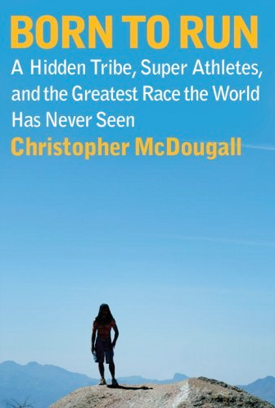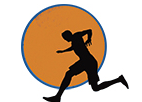Dr. Runner’s World and Mr. Hyde
What a delight to see that Runner’s World got rid of the “Sports Doc” who made the embarrassing, fearmongering comments about running shoes, and replaced him with a guy who makes it his first order of business to pen one of the most poised, knowledgeable and honest appraisals of barefoot running I’ve ever read. Oddly, or maybe not so much, Dr. Roberts posted his column about 24 hours before HBO’s “Real Sports with Bryant Gumbel” is due to air a segment examining the myths and misinformation of the running shoe industry. I was seated next to the HBO producer who was researching the piece during a Runner’s World seminar on minimalist shoes at the Lehigh Valley Half-Marathon, and he was flabbergasted by what he was hearing. Even though Runner’s World calls the wet test “the most important factor for choosing the right kind of running shoe,” there was Amby Burfoot mocking it as “useless.” The US Army has invested more money and brainpower than anyone on the planet trying to figure out how to prevent running injuries, Amby said, and the Pentagon has concluded that the wet test is nonsense. Then Amby caused even my jaw to drop. “Back in the ’60s, we ran way more and way faster in the thinnest little shoes, and we never got hurt. I never even remember talking about injuries back then. So you’ve got to wonder,” Amby mused, “what’s changed…” Warren Greene, RW’s shoe expert, made an astonishing offhand revelation when the producer peppered him with questions about what, exactly, motion-control shoes do.
“Oh, those are being phased out,” Warren said.
Wait… what? One of the biggest segments of the entire running-shoe line, a corrective device that Runner’s World has recommended for years as necessary for many of its readers, is silently being pulled from the shelves? (A few nuggets from the RW archives: “You should wear motion-control shoes if you are a runner who overpronates moderately to severely… Motion-control shoes are also best suited for big or heavy runners who need plenty of support and durability. These runners often have low arches (flat feet)….If you weigh 160 to 180 pounds (140 to 160 pounds for women) and overpronate, then go with motion-control shoes…If your arch is normal or flat (see “The Wet Test“), look for shoes in the motion-control category…For your longer runs [you should] stick with motion control shoes…”).
“Yeah, the manufacturers are pulling away from them,” Warren shrugged. It’s not hard to see why:
First of all, it’s important to realise that modem running shoes, even the ones equipped with ‘anti-pronation’ features, actually cause pronation–they don’t control it,” says Benno Nigg, PhD, a renowned University of Calgary researcher and author of the book, The Biomechanics of Running Shoes. ‘A runner, male or female, who pronates about eight degrees while running barefoot will often pronate about 20 degrees while wearing ‘anti-pronation’ running shoes,’ says Nigg. In other words, trying to control pronation may only make it worse.
Nigg was instrumental in creating the motion-control concept and original designs, and now even he is saying, Sorry about that.
“Jesus Christ,” the producer muttered, looking down at the Asics on his own feet. “Where were the watchdogs? How come nobody was questioning this stuff?”
Then, as if summoned by that call for someone in the running business to finally, finally, speak up, along comes RW’s new Sports Doc. What’s most amazing about Dr. Roberts’ column on barefoot running is what’s missing. You can instantly spot when someone knows nothing about barefoot running when they talk about “building up callouses on your feet” or “maybe it’s okay on the beach,” or “you need to gradually transition with thinner and thinner shoes.” Not only does Roberts avoid those mistakes, he attacks them:
A friend who has made the change cautions that the last place to make the change is on a beach or a nice soccer field. Those surfaces are so soft that one can still heel strike. The best place to learn is on a hard, smooth surface, like an old road.
Go ahead, rub your eyes. Yes, a physician writing for Runner’s World just advised you to run barefoot on an old road. And Roberts ain’t done. This next bit is a little inside baseball, but one of the trickiest questions about returning to natural running is whether you first need to strengthen your muscles after years of dormancy inside shoes. I wonder about this myself. I ran with a reporter for the New York Times who had no trouble handling a 6-mile run in bare feet on asphalt the first time he tried. I figured his calves would be screaming the next morning, but he was just fine. So how come he could transition in one day, while other runners need weeks? Were his muscles in better tune, or his technique? Decades ago, he’d been a college track runner, so maybe he just needed to kick off his shoes to re-awaken his latent forefoot strike. But the truth is, no one really knows. So how does Roberts address this critical but murky question? With one of the niftiest turns-of-phrase I’ve seen on the topic:
If you decide to try barefoot running, proceed slowly and carefully. If you have been heel striking, you will have weak muscles and tendons (and feet) that will need “training” to function well, and the cautions of increasing muscle loads applies to this transition, just as it does for transitioning from sedentary to active.
Your muscles and tendons will need training. Exactly. Maybe it’s strength, maybe it’s finesse, but all anyone really knows is that some kind of conditioning is necessary. In terms of clarity, Roberts’ phrasing in that regard ranks right up there with Coach Vin Lananna’s assessment: “I can’t prove it, but it seems to me that when my runners train barefoot, they go faster and get hurt less.” Boom — right there, you’ve got the observation of an expert qualified by his own intellectually-honest limits.
But Dr. Roberts’ mastery fails him with this unfortunate gaff: “There is nothing unnatural about shoes.” Of course shoes aren’t natural — you can’t go out and shake a bushel of Mizunos off the running-shoe tree. What he means is “There is nothing inherently wrong or harmful about shoes,” and that’s where he misses a golden opportunity. Roberts could have made the crucial distinction between protective and corrective footwear. That’s really the heart of the whole debate. This conversation would never have started if the shoe companies hadn’t taken a really good idea — a little puncture protection — and turned it into a really bad one — motion-control wedges, upturned toe boxes, thicker and thicker cushions, stiffer and stiffer soles. Some shoes are closer to natural, some less; some shoes function just fine, some are fiascos. How can you tell the difference? Let’s ask Bill Rodgers, who’s run more and better than any of us and sells shoes for a living: “Do you feel biomechanically like you’re moving barefoot?” Rodgers advises. “That’s what you want.”
Overall, though, good advice from RW’s new house doc. Now, if he could only get RW’s writers to take it. Unbelievably, even in the midst of this major debunking of running-shoe marketing we’ve seen for the past year — even while the shoe companies themselves are backing away from the idea that they can fix your feet with wedges and gizmos, here’s what the current issue of Runner’s World is telling beginners:
Go to a specialty running store where trained professionals will evaluate your feet, watch you run, recommend the right shoes, and then let you go out for a test drive. You’ll leave with a comfortable pair of shoes that will have you running pain-and injury-free. (Emphasis mine, along with the head-slapping disbelief).
Not even the most over-Red Bulled marketing exec in the sports shoe industry would ever claim that its shoes will leave you “injury-free,” yet here you have it from a magazine that’s supposed to be a world authority in the sport. How did that producer put it? Right …. Where were the watchdogs?


